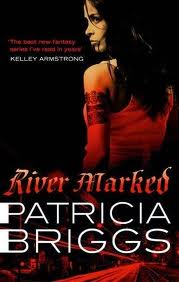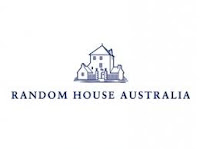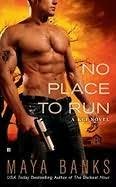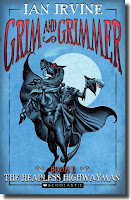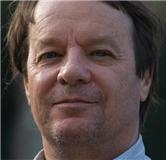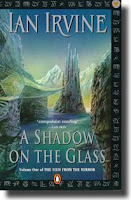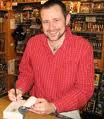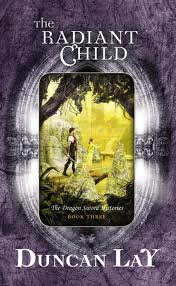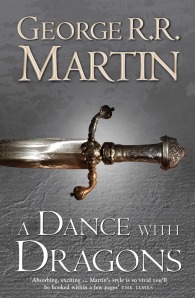Publishing in Australia
I have written this article and compiled a few posts from various authors on this subject as we get asked about it a lot. How does one get published? Is it better to self-publish? How do I publish an E-book? Who will stock my book?
All these questions we are faced with and we can only discuss from the book store point of view. Where we get books from, what you need to know if your a self published author seeking for us to stock your books.
We decided to go to the people who would know more and put a call out for authors to tell us their tales of how they become published and what route they would recommend for first time writers.
Marianne de Pierres– author of the acclaimed
Parrish Plessis and
Sentients of Orion science fiction series and Tara Sharp crime series has this to say.
Getting published is in many ways much easier than it used to be. But being noticed and selling your work is actually getting harder.
The advent of internet publishing and publicity has been a double edged sword for writers. Major publishers are tightening their belts because of the competition. And while there are so many online markets now, and self-publishing in e-book form is about to explode, with that has come the intense competition to be heard/seen/read.
My advice to any writer starting out is not to settle for second best in their own work, merely to get content out there. The temptation is strong ... I mean you can publish perfectly viably on your own blog if you wish, but that doesn't mean the content is always as good as it can be. The current publishing system is full of checks and balances. Many sets of eyes see a novel before it hits the shelves, much thought and work goes into it. Don't forget that if you're considering going the self-publishing route.
However, if you're struggling to be looked at by major publishers, there are some quality small press publishers around who are definitely worth pursuing. That can be a rewarding and profitable experience, but be prepared to roll up your sleeves an help out with your own publicity and marketing. The time of the reclusive, luddite writer is over.
MDP
We can attest to the fact authors need to be more active in promoting their books as well. Most book stores will be putting up banners, signs, staff cards and other promoting materials but sometimes it just is not enough. Then you get the small majority of book store staff who really don't care what they are selling. Authors need to take a more active role in promoting – which most are starting to do. The internet is a wonderful thing these days.
Ian Irvine has written 26 novels to date, including the international bestselling 11-book fantasy sequence,
The Three Worlds, an eco-thriller trilogy about catastrophic climate change, and 11 books for children and young adults. He has this to say:
Every year, the major Australian publishers each receive thousands of unsolicited fiction manuscripts, and literary agents are also deluged by them. But very few of these manuscripts are ever published, probably less than 1%. Why is this, and is it easier to get published in Australia than it used to be, or harder?
It’s always been hard to get published, anywhere, and it was especially hard to get fiction published in Australia until 15-20 years ago, because until then most of the big publishers preferred to import books from their overseas operations rather than fostering local talent. This situation began to change in the late 1980s, and changed dramatically during the mid-1990s, when Australian popular fiction authors in certain genres, and notably in fantasy, began to outsell many of their big-name international counterparts. These early authors included Sara Douglass, Traci Harding, Kate Forsyth, myself, Jennifer Fallon, Sean Williams, Cecilia Dart-Thornton and Trudi Canavan, and Garth Nix for slightly younger audiences, among others, and all went on to considerable success internationally.
The success of these authors established a golden age for Australian speculative fiction both here and overseas. A large number of other authors have been published in this field in Australia since, and many of them have also had success in the international arena. And it’s certainly true that there are a lot more books being published in Australia today than there were ten years ago, so it’s difficult to argue that it’s harder to get published than it used to be.
But the problem is, the number of titles published in Australia has increased a lot faster than the number of readers. The same situation prevails with English-language publishing internationally. This means, for most authors who do get published, that the probable sales of their book are rather less than they would have been a decade ago. Because individual book sales are less, and also due to the increasing tendency of publishers to ‘pick winners’ and spend most of their marketing budget on these authors’ books, most books published today are not promoted in any meaningful way. And because they’re not promoted, most of these books do poorly, and their authors find it hard to get their next book published. One can’t blame publishers for this. Publishing is a difficult business and becoming more difficult every year, and they have to make a profit to survive.
And the future? Given the difficult international situation, allied to the deluge of self-published books, particularly ebooks, and competition from the internet, games and other new forms of entertainment, it can only become harder for authors old and new to gain enough sales of their books to stay in print. A lucky few will be picked as winners, and many (though not all) of them will succeed. The other winners will be those who either have a natural flair for, or a ruthless determination to succeed at, self-promotion. And the rest? Well, pray for luck.
With those figures you may feel what is the point? Some people though have pushed on and have gone the self publishing route.
I self published The Fall Of Ossard about 18 months ago (the title broke into the Borders Top 20 in mid October 2009). With a cover by Shaun Tan and a cover quote from Sara Douglass, the dark fantasy went well. Book 2 comes out in September (Ossard's Hope).
A writer may be interested in self-publishing for a number of reasons. I chose to self-publish as I wished to have a few copies of my book to give out to family and friends and perhaps make the odd sale via my blog. Non-fiction authors who have a small but ready-made market, an author of a local history or a person who runs seminars in a niche area, may consider self-publishing.
I chose to publish my book with Createspace, a Print on Demand [POD] publisher. For me, POD was the logical choice as there is no minimum print run or upfront costs. Createspace assigned my book an ISBN at no charge. The interior of my book was uploaded to the site as a PDF document. Createspace offers templates and royalty free pictures that can be used to create a cover. Users have the choice of uploading their own cover.
 When my cover was ready, Createspace set a minimum price for my book. I then set the cover price. The difference between the minimum price and the cover price is paid to the author as a royalty. POD authors who sell their books at a competitive price make very little profit. A physical copy of the book is only printed when one is ordered via the internet and then mailed to the purchaser.
When my cover was ready, Createspace set a minimum price for my book. I then set the cover price. The difference between the minimum price and the cover price is paid to the author as a royalty. POD authors who sell their books at a competitive price make very little profit. A physical copy of the book is only printed when one is ordered via the internet and then mailed to the purchaser. Self-publishing may not be advisable for all writers. One of the major drawbacks to self-publishing is that there is no quality control. It is up to the author to ensure their work is formatted properly and free of errors. A self-published can be difficult to market. I advise writers interested in self-publishing to think about their goals and potential market. My experience of self-publishing is positive. It was inexpensive, fun and as I suspected, I have made a few sales from my blog.


Other ways of getting noticed is the writing programs. These you can enter and you may get 'discovered' that way like Phillipa Fioretti
 I was selected for the 2008 Hachette/QWC Manuscript Development Program for my novel The Book of Love. Hachette Australia subsequently offered me a two-book contract. I thought that as I’d only taken up writing in 2006 I’d be wandering in the wilderness for years, and probably forever, so I was very surprised. I have been very fortunate because getting published anywhere these days is hard, not just in Australia.
I was selected for the 2008 Hachette/QWC Manuscript Development Program for my novel The Book of Love. Hachette Australia subsequently offered me a two-book contract. I thought that as I’d only taken up writing in 2006 I’d be wandering in the wilderness for years, and probably forever, so I was very surprised. I have been very fortunate because getting published anywhere these days is hard, not just in Australia.
Writing is hard work and the work doesn’t stop once you sign that contract, it intensifies and your energies are directed away from getting a publisher to building a readership, working with editors and publicists and so on. My publishers are very professional, as you’d expect, and have been supportive and consultative - and as publishing a book is a collaborative thing, that’s just what you’d hope for.
I would never consider self-publishing. Ever. I have no head for business and no heart for the relentless self-promotion involved. But I’m comfortable promoting my published books because there is a team advising and working with me. I made a deliberate choice to write commercial fiction with the aim of being published because I know my limitations and I don’t believe self-publishing a good way to be picked up by a commercial publishing house. Others disagree with this view but when I started to write, I had a clear objective and a time frame of five years. I never had a need to see my words in print no matter the cost. And having worked as a visual artist for a number of years I know the cost – both to the wallet and the soul.
Being a published author gives me the space to keep writing, that’s what is important to me. And seeing the chaotic, sprawling mass of ideas shaped into this neat and concise book on a nice clean shelf is a very satisfying feeling. Any sort of creative life has highs and lows, but this erratic life seems worth it when people smile and say how much they loved the book. I know it’s a business, but it’s also something I’ve given and they’ve received it with pleasure. That’s a good feeling.
Now we get to the awards aspiring writers can enter. These are things like the HarperCollins Varuna awards for manuscript development, The Allen & Unwin The Australian/ Vogel Literary Award
. There are more awards to research as well – too many to list here. Just remember getting picked doesn't mean you automatically get published – it just increases your chance a little.
Candice is someone who entered these awards and here is her experience,
I would be very happy to share my personal experiences if they're relevant. I have had one children's book published, however, I've found the publishing process very difficult. The market seems extremely tight. With a lot of my submissions, I've received very positive comments on my writing from publishers, ending with an inability to find a place for my work in their lists.
One example is an unpublished adult novel I wrote that received a commendation in a well-recognised awards program. I received the award in 2007, yet I haven't managed to find a publisher for it. One publisher recently said they'd like to publish the work but that the list for this year is already full, so they may come back to me for a potential 2012 publication.
It is a great idea to enter these awards and also write short stories as these increase your footholds in getting noticed.
One last way of getting published is to go outside of Australia. Here is
Karly Lane's story:
Most major Australian publishing houses don't accept unsolicited manuscripts, so if you haven't got an agent, it's very difficult to get your work in front of an editor. The process of trying to obtain an agent is another nightmare in itself, because there are so few of them here, that finding one to represent you is almost as long and drawn out, as submitting the manuscript!
When I began my publishing journey, I chose to submit my romantic suspense titles to a US e-publisher as a way to gain experience. There wasn't any main stream publishers who were interested in shorter, 65K length romances at the time, and it was the best thing I ever did. Not only did it give me valuable experience with the publishing process, it helped me gain the confidence to believe in, and further my writing.
However if you keep up to date with what's going on in the publishing world, you can find opportunities with Australian publishers. I eventually submitted to Allen & Unwin via their Friday pitch sessions I'd heard about. You don't need an agent for this and I was lucky enough to have my soon to be released novel, North Star published by them.
Publishing in Australia is not easy- but having finally achieved my dream, and it's one of the most rewarding things I've ever experienced.
Anyways I hope this blog post helps and people are prepared for the hard slog to getting published. It is no easy thing, but if you have the drive for it and the dream – then MAKE it happen. You decide what route you want to go through and make it work for you!


